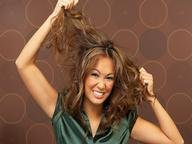Quiz Answer Key and Fun Facts
1. In which of these ancient cultures was it common for high ranking females to shave their heads bald and wear a wig instead?
2. In the Middle Ages it was common practice for the socially elite to sprinkle what substance into the hair to make it sparkle and shine?
3. Which part of the henna plant has been used for centuries by multiple cultures to give hair a red color?
4. Around 1715, in America and parts of Europe, it became a popular practice to put what substance on the hair?
5. Around the turn of the 19th century people of all classes started to bathe more frequently as science showed it to be beneficial. Which of the following was a common shampoo mixed at home?
6. In the 1880s P.T. Barnum showed the 7 Sutherland Sisters to the world. What was so unusual about their hair?
7. After World War I was over a new trend in hairstyles became vogue for women. What was the big change in the new hairstyles?
8. Which of the following was another name for the bouffant hairstyle that was popular in the 1960's?
9. The Dinka tribe of southern Sudan, use what naturally occurring substance to color their hair an unusual bronze color?
10. The first hair museum was dedicated in 2003 in French Lick, Indiana.
Source: Author
dcpddc478
This quiz was reviewed by FunTrivia editor
DakotaNorth before going online.
Any errors found in FunTrivia content are routinely corrected through our feedback system.

